![]()
The New York Rangers are in the midst of a critical period in their development. Every move they make from this point forward may play a large role in shaping the next generation. There are many different paths that general manager Jeff Gorton and company can take to bring the team back to relevance. Below is a detailed 10-step plan that would set the Rangers up for the future.
Be aware that the following will not result in a Stanley Cup-winning team but rather one that will complement the growth of younger players and return them to playoff contention. Note: All steps regarding free agent signings are included under the assumption that they are available on July 1 of that year.
Part One – Remainder of 2018-19 Season
Step One: Trade Mats Zuccarello, Kevin Hayes, Adam McQuaid and Brendan Smith
First and foremost, the Rangers must have a trade deadline firesale to continue building up their prospect pool. The ideal return for players like these four would be a draft pick and a prospect, or just a draft pick. Given that Brendan Smith has played extremely poorly and has a large contract, the Rangers would only get a late-round pick for him.
However a Smith trade may play out, he needs to be taken off the books to give New York more cap space. These moves would free up approximately $16.8 million. Allowing Mats Zuccarello, Kevin Hayes and Adam McQuaid to walk in the offseason would still contribute to the cap savings but without a return.
Step Two: Recall Lias Andersson and Libor Hajek from Hartford Wolf Pack
Lias Andersson and Libor Hajek are two of the bright, young prospects in the Rangers’ organization. Since the departure of two forwards and two defensemen following trades, the door is open for them to receive significant playing time as they inch closer to full-time NHL roles.

Andersson has scored four points in 21 games for the Rangers and 15 points in 21 games played for the Hartford Wolf Pack. Meanwhile, Hajek has scored three points in 39 games for the Wolf Pack.
Step Three: Keep Vitali Kravtsov in Hartford
Should Vitali Kravtsov come to America following the conclusion of his KHL season, he must be given hefty ice time in Hartford. His team, Traktor Chelyabinsk may reach the playoffs, but he has stated that he may leave Russia if they do not.
For the sake of the Rangers, the best-case scenario would be that Traktor does not qualify for the playoffs, allowing Kravtsov to acclimate to North American hockey in Hartford. He has logged 17 points in 37 games for Traktor this season. He also scored six points for Russia at this year’s World Junior Championships.
Part Two: 2019 Offseason
Step Four: Agree to New Contracts with Boo Nieves, Neal Pionk, Anthony DeAngelo and Cody McLeod. Do Not Re-sign Pavel Buchnevich
At this point, the Rangers should have a large amount of cap space, especially since the cap is being raised and should attempt to negotiate new contracts with Boo Nieves, Neal Pionk, Anthony DeAngelo and Cody McLeod. Several of these players, such as McLeod and Nieves, are not long-term solutions for the Rangers but they provide forward depth.
They should not re-sign Pavel Buchnevich, who has 15 points in 30 games and is still on his entry-level contract. He has failed to solidify a spot in the lineup and, in due time, there wouldn’t be room for him. Best not to negotiate a new contract.
Step Five: Attempt to Negotiate a Contract with Either Artemi Panarin or Brayden Point
Brayden Point may be a stretch, but the Tampa Bay Lightning will have a very difficult time re-signing the forward following the conclusion of his entry-level contract. They will be looking to give Cedric Paquette a new contract as well and three of their starting defensemen will be unrestricted free agents.
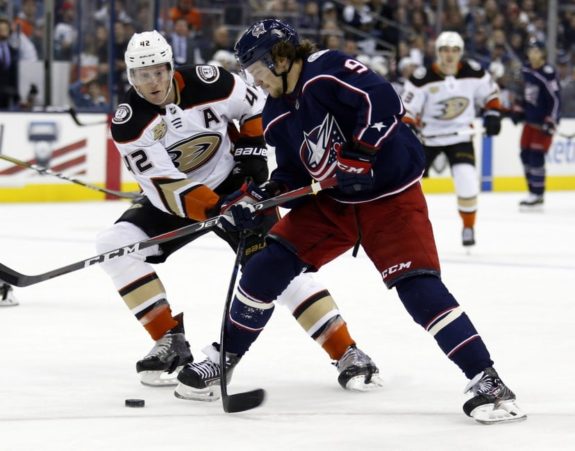
The Rangers would have enough cap space to go after Point, but there may not be mutual interest there. Rangers management would more easily be able to agree to a $9-$10 million contract with Artemi Panarin. Point has scored 61 points this season, compared to Panarin’s 52, and Point has played in three more games.
Step Six: Agree to Contract with Joonas Donskoi
Joonas Donskoi, in his last season under contract with the San Jose Sharks, has been a consistent bottom-six forward for several seasons. He is a good skater who is hard on the puck and will help the Rangers’ bottom lines. He has scored 25 points in 48 games this season, putting him on pace to eclipse his career-high point total. His next contract will likely be around $3 million and for two to three seasons.
Part Three: 2019-20 Season and Offseason
Step Seven: Trade Marc Staal at Deadline
Marc Staal is a seasoned veteran who has served the Rangers for years. His play has been solid for the most part, and he will have good trade value. He is still on a $5.7 million contract, which could make him a tough sell, especially as a defenseman who’s over 30 years old. But surely there is a team somewhere that would take him.
Step Eight: Trade Alexandar Georgiev
Alexandar Georgiev has shown a lot of promise as a young goaltender. His statistics are not the best, but he has also been playing behind one of the league’s worst defenses. Trading him would not only save cap space and bring in future assets, but it would also allow franchise goalie prospect Igor Shestyorkin to take over as Henrik Lundqvist’s backup.
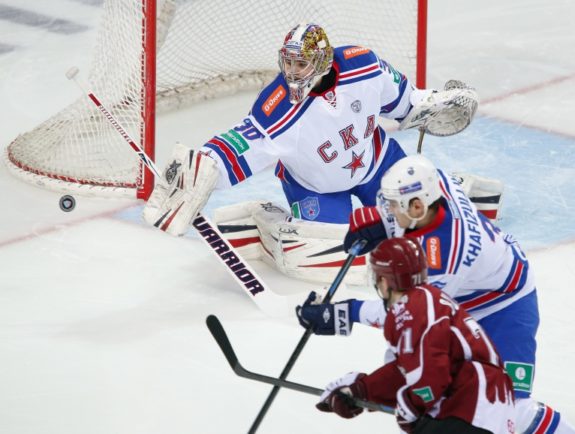
Step Nine: Agree to Contracts with Chris Kreider, Vladislav Namestnikov and Jesper Fast. Do Not Re-sign Ryan Strome or Jimmy Vesey
Chris Kreider and Vladislav Namestnikov may be important pieces moving forward. Kreider has been one of the Rangers’ best players this season and is second on the team in points. His speed and agility play well into head coach David Quinn’s style. Namestnikov is extremely useful due to his versatility. He has played both center and winger and played both well. He has had a bit of an underwhelming season, but history shows that he performs excellently with upper echelon players.
Jesper Fast is still a fan favorite. He is not a prolific scorer but consistently puts forth an incredible effort. Fast has won the team’s Players’ Player Award, given to the player who best exemplifies effort and teamwork as chosen by the players, each of the past three seasons.
Ryan Strome has improved his play of late, but he is not a valuable piece of the rebuild. A former top-five draft pick, Strome had a couple of decent season as a member of the New York Islanders but never lived up to his full potential. He has skated in 27 games for the Rangers, notching 11 points.
Jimmy Vesey is another forward who never lived up to his potential. He is on the verge of eclipsing his previous career high in points only halfway through the season, but he is not someone who would add to the rebuild long-term. He had the potential to be a great scorer in the NHL after a strong collegiate performance at Harvard but has become nothing more than a bottom-six forward.
Step Ten: Agree to Contract with Either Alex DeBrincat or Jake DeBrusk
The final step to positioning the Rangers for success is to address the middle lines. Signing either Alex DeBrincat or Jake DeBrusk would bolster the middle lines tremendously. By trading Staal and not re-signing Strome or Vesey, the Rangers would free up approximately $11 million in cap space to be used towards negotiating a contract.
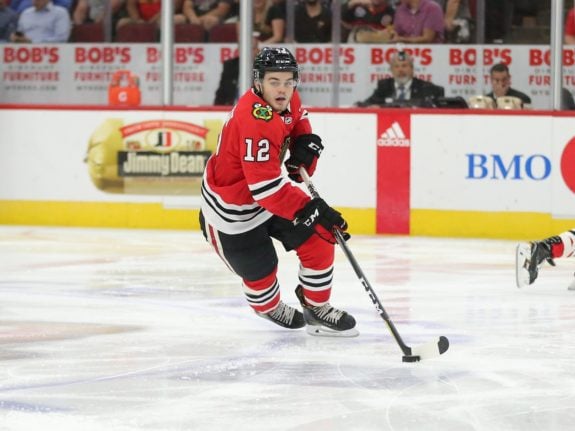
The Chicago Blackhawks may not be able to afford DeBrincat given the amount of cap space they’ve allocated to only a few players. The Boston Bruins are in a similar situation with several players eating up large sums of cap space. They also have a plethora of young players who will need new contracts following the conclusion of their entry-level ones.
Summary and Takeaways
There are a lot of moving parts here and many factors to take into account. It is difficult to forecast the future because one decision can reshape all the subsequent decisions. This 10-step plan would accomplish many tasks, the first of which is acquiring assets in addition to cap relief.
Trading away the more prominent players, like Zuccarello, Hayes, McQuaid, Smith and Staal would save the team a heap of money over those years. It will also bring back a huge return of draft picks and prospects that will continue to build the future of the team. Trading these players also opens the window for players of the future to receive legitimate minutes at the NHL level.
The second benefit of this plan would be the acquisition of elite talent. By keeping Kravtsov in the AHL and signing an elite player like Panarin or Point, primes the future first line of the team. Kravtsov would then be able to step in the following season and learn alongside one of the NHL’s best. Signing an elite talent would also help Filip Chytil break out.
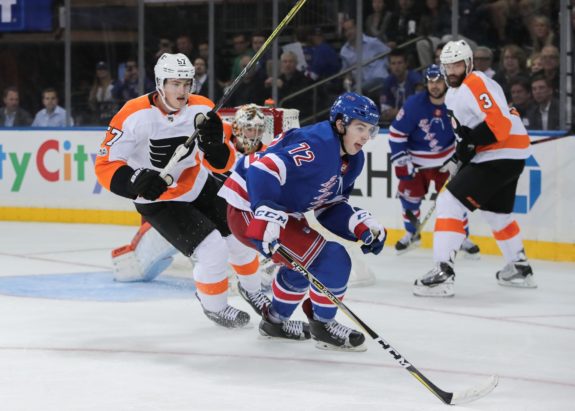
Third, all of this would help solidify the future defense. It would give more ice time to younger players, such as Hajek and Pionk, and allow them to acclimatise to the NHL.
Lastly, this outline would solidify the Rangers’ middle lines. Donskoi, or a player like him, would help mitigate the effects of the trades, and of not negotiating a new contract with Buchnevich. Agreeing to a contract with DeBrusk or DeBrincat would have a similar effect but to a higher degree. Both perform better than Donskoi, and would primarily fill the gap created by the departure of Hayes and Zuccarello a season and a half prior.
An important fact to note is that all of this excludes the Rangers’ future draft picks. Depending on where the Rangers finish in the standings over the course of these next couple of seasons, their draft picks may play an integral role in forming the future lineup. In addition, draft picks may play an important role in filling the holes created by recent trades.
This is not a plan that will win the Rangers a Stanley Cup, but one that will position them to begin to compete against the better teams in the league and contend for a playoff spot.
The Rangers’ young players like Chytil and Kravtsov, along with their next couple of high draft picks, will need to develop significantly before the Rangers can become elite. If management follows a model like this and ensures their prospects develop in a timely manner, the Rangers are only a few seasons away from contending for a Stanley Cup.
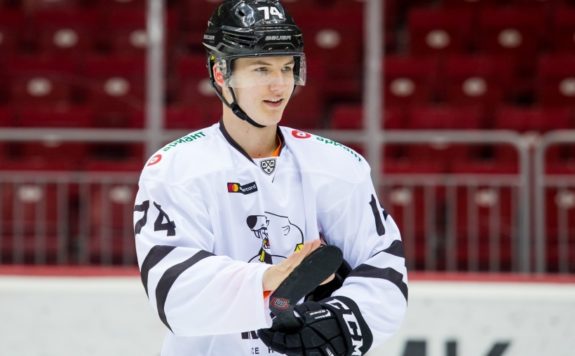
Below is a rough projection of what the lineup may look like at the start of the 2020-21 season using the 10-step plan above. Note that a future draft pick may also mean an elite talent on one of the upper lines, as opposed to the fourth.
| LW | C | RW |
| Filip Chytil | Vitali Kravtsov | Artemi Panarin/Brayden Point |
| Chris Kreider | Mika Zibanejad | Vladislav Namestnikov |
| Alex DeBrincat/Jake DeBrusk | Brett Howden | Joonas Donskoi |
| (future draft pick) | Lias Andersson/(future draft pick) | Jesper Fast |
| LD | RD |
| Brady Skjei | Neal Pionk |
| Libor Hajek | Kevin Shattenkirk |
| K’Andre Miller | Anthony DeAngelo |
Statistics from NHL.com, CapFriendly, EliteProspects, and TSN.